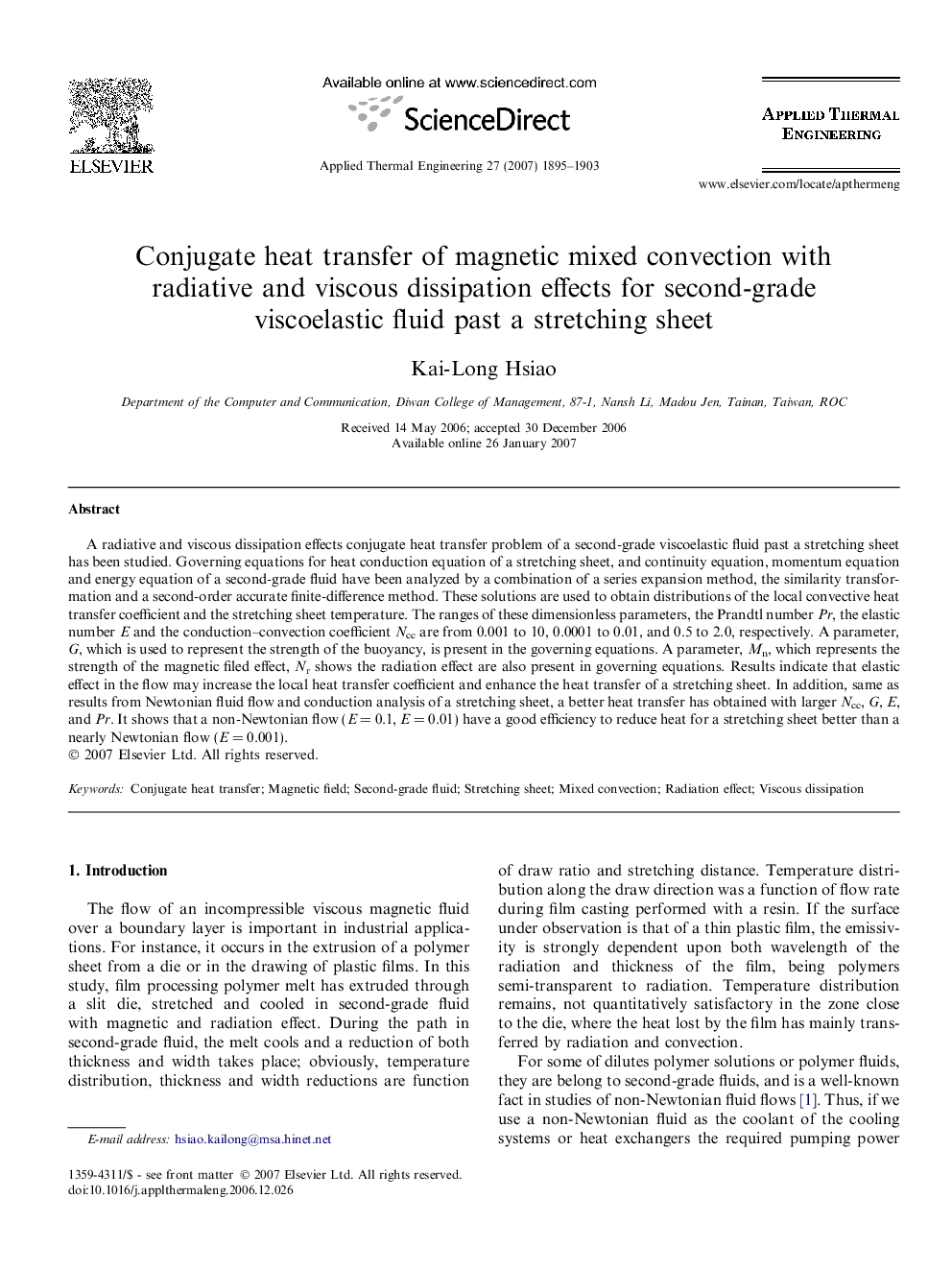| Article ID | Journal | Published Year | Pages | File Type |
|---|---|---|---|---|
| 649021 | Applied Thermal Engineering | 2007 | 9 Pages |
A radiative and viscous dissipation effects conjugate heat transfer problem of a second-grade viscoelastic fluid past a stretching sheet has been studied. Governing equations for heat conduction equation of a stretching sheet, and continuity equation, momentum equation and energy equation of a second-grade fluid have been analyzed by a combination of a series expansion method, the similarity transformation and a second-order accurate finite-difference method. These solutions are used to obtain distributions of the local convective heat transfer coefficient and the stretching sheet temperature. The ranges of these dimensionless parameters, the Prandtl number Pr, the elastic number E and the conduction–convection coefficient Ncc are from 0.001 to 10, 0.0001 to 0.01, and 0.5 to 2.0, respectively. A parameter, G, which is used to represent the strength of the buoyancy, is present in the governing equations. A parameter, Mn, which represents the strength of the magnetic filed effect, Nr shows the radiation effect are also present in governing equations. Results indicate that elastic effect in the flow may increase the local heat transfer coefficient and enhance the heat transfer of a stretching sheet. In addition, same as results from Newtonian fluid flow and conduction analysis of a stretching sheet, a better heat transfer has obtained with larger Ncc, G, E, and Pr. It shows that a non-Newtonian flow (E = 0.1, E = 0.01) have a good efficiency to reduce heat for a stretching sheet better than a nearly Newtonian flow (E = 0.001).
